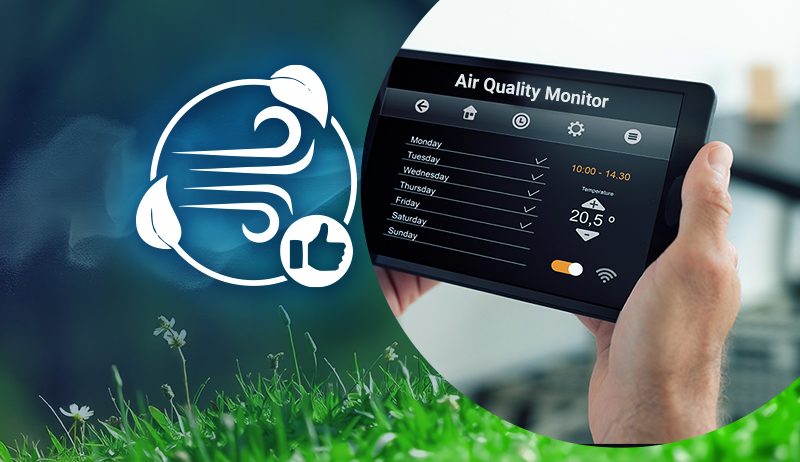As the world faces serious challenges from climate change and environmental damage, renewable energy sources have become very important.
Among these, solar energy stands out because it can meet the rising energy needs and plays a key role in reducing air pollution.
With pollution levels at an all-time high and its harmful effects becoming more severe, the demand for clean and renewable energy is more urgent than ever.
So what’s the role of solar energy in reducing air pollution? Why solar energy? What’s Australia’s situation? Let’s explore together.
By looking at the various ways solar power improves air quality, we aim to show its critical role in global efforts for better environmental and public health.
Solar Energy: A Clean and Sustainable Alternative
Australia is one of the sunniest places in the world, making it a perfect spot for generating solar power.
Solar energy is abundant, renewable, and doesn’t produce greenhouse gases when used, making it a key solution to combat climate change. By using solar power, Australia can rely less on fossil fuels and lower its carbon emissions.
Solar energy is made by capturing sunlight and turning it into electricity using solar panels. These panels have photovoltaic cells that take in sunlight and produce direct current (DC) electricity.
An inverter then changes the DC electricity into alternating current (AC) electricity, which can be used to power homes, businesses, and even whole communities.
Understanding Air Pollution and Its Impacts
Effects on the Environment
Air pollution affects not just people, animals, and plants, but entire ecosystems. Haze, which is a visible form of pollution like smog, makes it hard to see shapes and colours clearly and can even reduce the clarity of sounds.
Pollution particles eventually settle back on the ground, contaminating water bodies and soil. This can harm crops, reduce their growth, and damage young trees and other plants.
When sulphur dioxide and nitrogen oxides in the air mix with water and oxygen, they create acid rain. These pollutants mostly come from coal-fired power plants and vehicles.
Acid rain harms plants by altering the soil, pollutes rivers, lakes, and streams, damages crops, and can even cause buildings and monuments to wear down.
Animals, like humans, can also suffer from air pollution. Exposure can lead to birth defects, illnesses, and lower rates of reproduction.
Global Warming
Global warming\climate change is a phenomenon caused by both natural and human-made air pollution. It refers to the increasing temperatures of the air and oceans worldwide.
This warming is partly due to the rise in greenhouse gases in the atmosphere, which traps heat energy that would usually escape into space.
Carbon dioxide, a greenhouse gas, impacts global warming the most. It is released into the atmosphere when fossil fuels like coal, petrol, and natural gas are burned.
Humans depend on fossil fuels for powering vehicles, heating homes, and running factories, all of which release carbon dioxide into the air.
Other greenhouse gases include methane, nitrous oxide, and fluorinated gases. Coal plants and agricultural processes mainly release methane. Nitrous oxide comes from industrial factories and agriculture, and fossil fuels are burned in cars.
Air Pollution in Australia

Air pollution in Australia is generally lower than in many other countries, but it still affects health and the environment.
The main sources of air pollution include car and truck emissions, factories, power plants, and the use of wood heaters in homes. Natural events like dust storms and bushfires also contribute to pollution, especially during dry seasons.
Vehicles release harmful gases and particles into the air, while industrial activities, such as mining and manufacturing, add to the problem by emitting pollutants like sulphur dioxide. Wood heaters, commonly used in colder areas, produce smoke that can impact air quality.
Natural sources, like dust from dry areas and smoke from bushfires, can significantly impact air quality, especially during droughts and hot weather.
Air pollution can lead to health issues, such as breathing issues and heart conditions, and it also harms the environment by impacting plant growth and contributing to climate change.
The Benefits of Solar Energy to the Environment| How do Solar Panels Help The Environment
Reduction of Greenhouse Gas Emissions
Using solar panels to generate electricity helps reduce greenhouse gas emissions. Traditional power plants, like those that burn coal, release a lot of carbon dioxide and other gases that contribute to global warming.
Solar panels, on the other hand, produce electricity without any emissions, making them a clean and sustainable choice.
Improved Air Quality
Solar panels also help improve air quality by reducing air pollution. Power plants and other industrial sources release harmful pollutants into the air, leading to breathing problems and other health issues.
Since solar panels don’t produce any air pollution, they are a healthier option for both people and the environment.
Water Conservation
Decreased Demand for Fossil Fuels
Reduced Energy Loss
Solar panels also reduce energy loss that happens during transmission. Normally, the farther electricity travels from a power plant to homes and businesses, the more energy is lost.
With solar panels, electricity is produced and used right where it’s needed, which is especially helpful in rural or remote areas.
Improved Resilience Against Power Outages

Solar panels can help keep the lights on during power outages. If traditional power plants fail, it can cause widespread blackouts.
But with solar panels, homes and businesses can continue to generate their power, reducing reliance on the grid, especially during emergencies when electricity is essential.
Increased Property Value
Installing solar panels can also increase property value. Homes and businesses with solar panels often sell for more because they offer lower energy costs and a reliable source of electricity.
Buyers are usually willing to pay extra for properties with eco-friendly features, making solar panels a smart investment.
Creating Job Opportunities
The growth of solar energy also creates jobs and boosts the local economy. Installing and maintaining solar panels requires skilled workers, and the demand for these jobs is growing as more people and businesses switch to solar energy.
This can be especially beneficial in areas where traditional industries are declining, providing new job opportunities and supporting economic growth.
How Solar Energy Reduces Air Pollution
Reduction in Greenhouse Gas Emissions
Once solar energy systems are set up, they generate electricity without releasing greenhouse gases. By replacing electricity from fossil fuels, solar power helps lower the overall carbon footprint.
Studies have shown that if solar energy is widely used, it could significantly reduce CO2 emissions, which are a major cause of air pollution and climate change.
Decrease in Particulate Matter and Other Pollutants
Burning fossil fuels is a big cause of tiny particles in the air, known as particulate matter (PM), which can lead to serious breathing and heart problems.
Solar energy systems don’t produce PM, nitrogen oxides (NOx), sulphur dioxide (SO2), or other harmful chemicals, which help to reduce these pollutants in the air. As more solar power is used, we rely less on fossil fuels, resulting in cleaner air.
Energy Production with No Fuel Combustion
Urban Air Quality Improvement
Solar energy systems, especially rooftop solar panels, can quickly improve air quality in local areas. Cities, which often have high pollution levels due to heavy traffic and dense populations, can benefit greatly from local solar installations.
These systems reduce the need for fossil fuel power plants, which are often located near cities, thereby lowering urban air pollution.
Reduced Dependency on Polluting Power Plants
Renewable Energy Australia

Solar Power
Australia is one of the sunniest places in the world, making it ideal for solar power. Solar panels are now a common sight on rooftops across the country, and large solar farms are also being built.
Solar power is one of the fastest-growing sources of energy in Australia because it’s clean, renewable, and helps cut down on electricity bills.
Wind Power
Wind power is another major renewable energy source in Australia. Wind farms, which consist of large turbines that generate electricity from the wind, are mainly located in coastal and inland areas where wind speeds are high.
Wind energy is growing quickly because it produces no emissions and helps to diversify the country’s energy mix.
Hydro Power
Hydropower, which generates electricity from flowing water, has been used in Australia for many years. Most of the country’s hydroelectric plants are located in mountainous regions with fast-flowing rivers.
Hydropower provides a stable and reliable source of renewable energy, although it depends on rainfall and water availability.
Other Renewables
Australia is also exploring other renewable energy sources like bioenergy and geothermal energy. These technologies are still developing but offer additional ways to produce clean energy.
As Australia’s renewable sector grows, the demand increases too. And Cyanergy is always ready to fulfil all of your renewable energy demands. Get a free quote or talk to an expert today!







